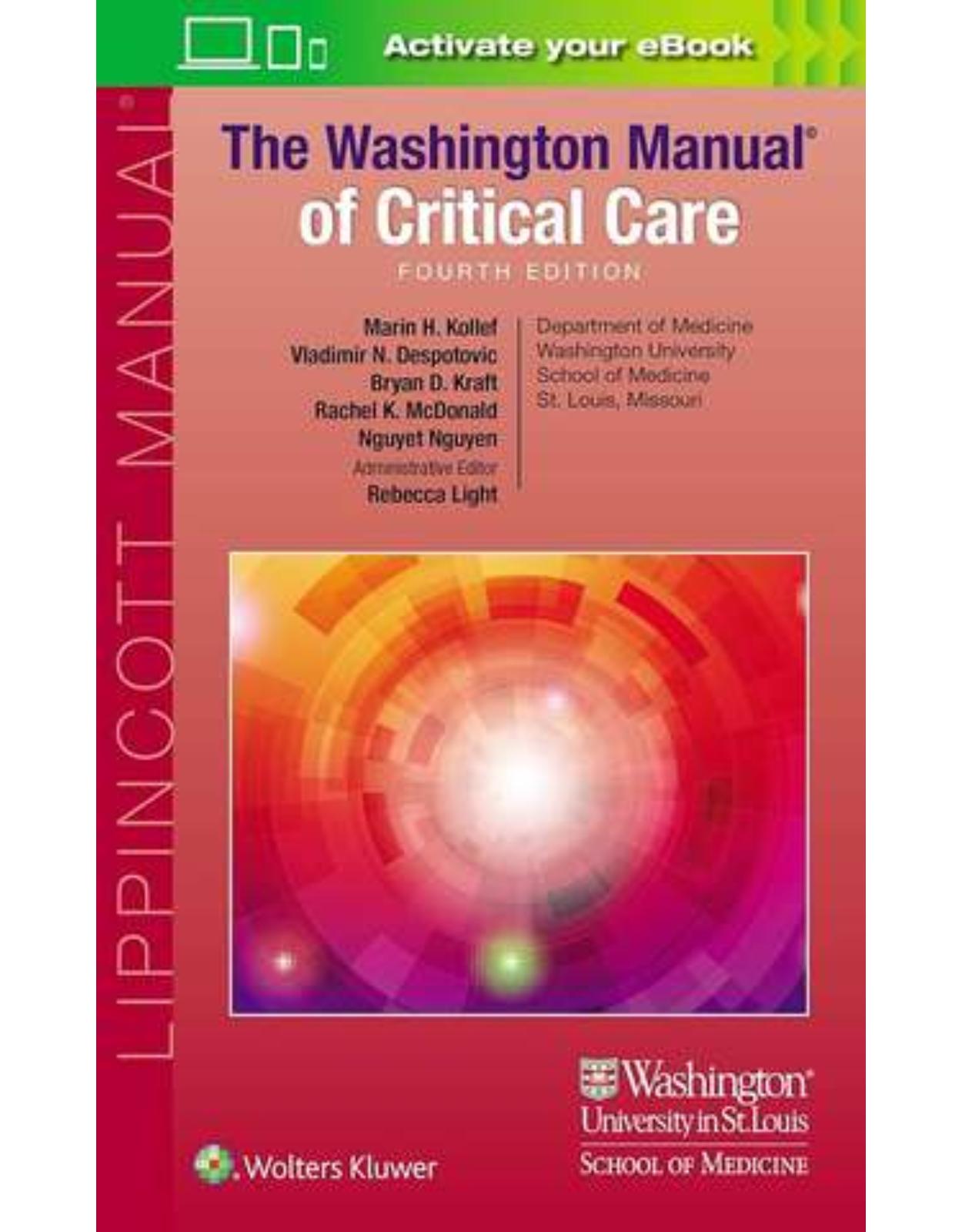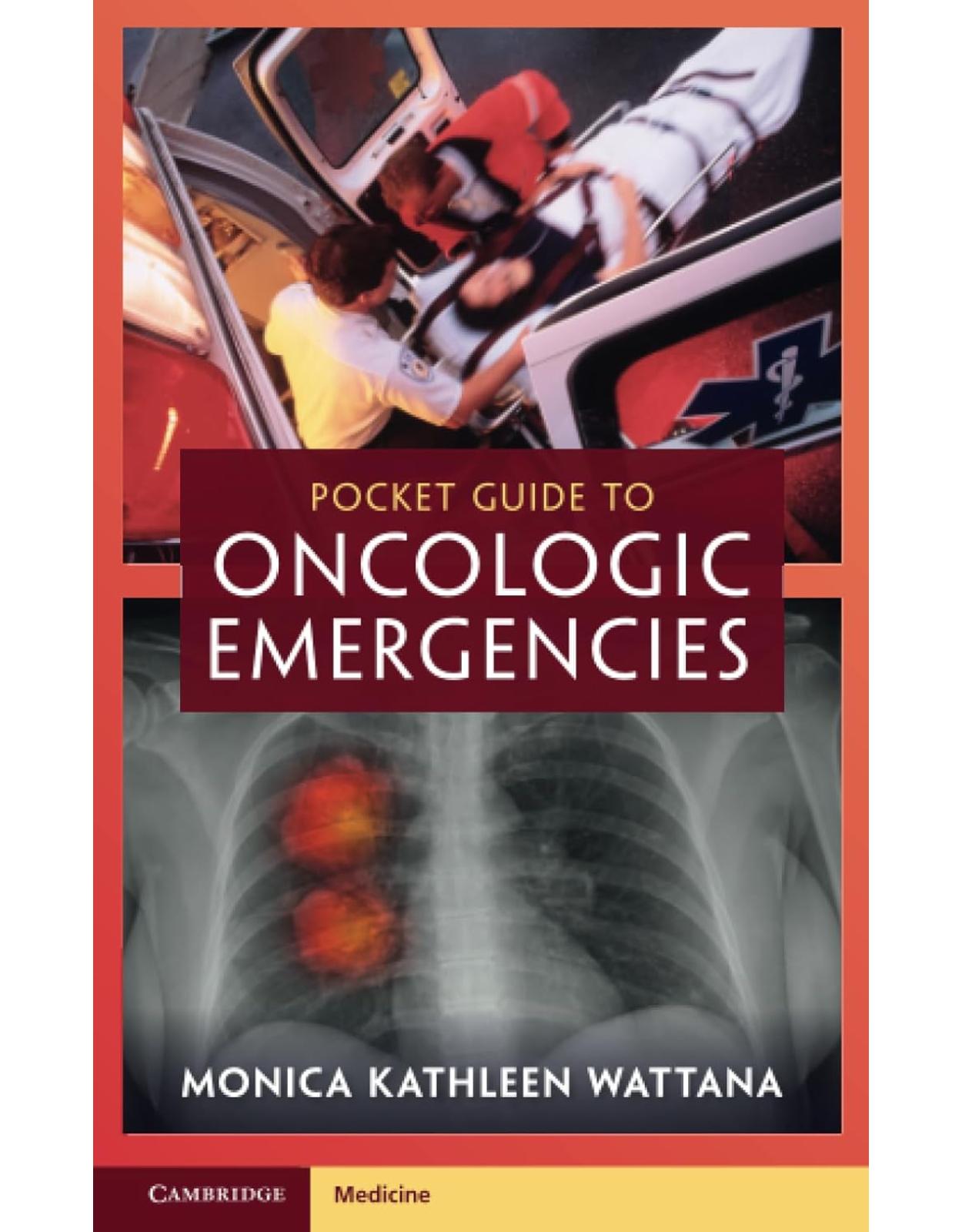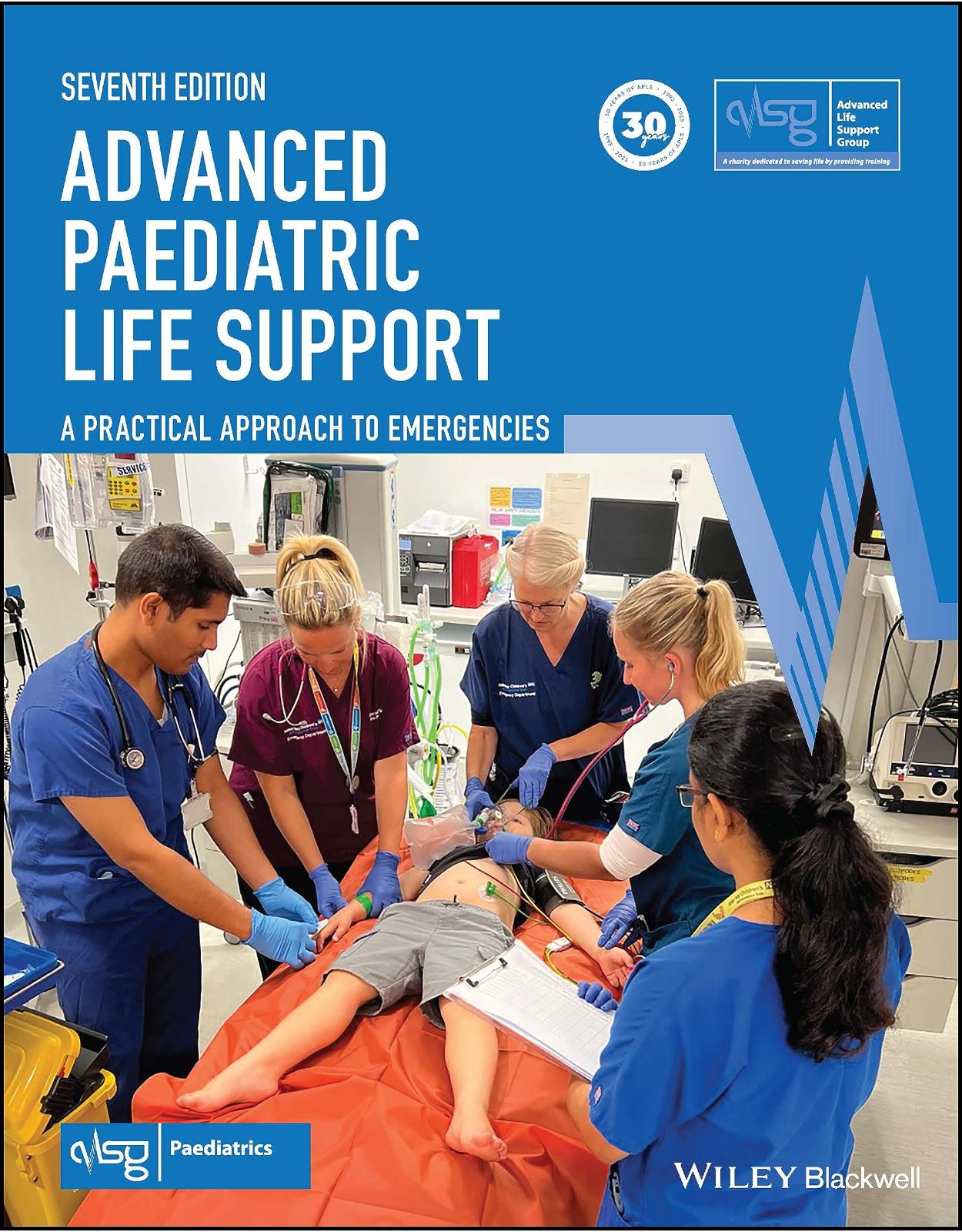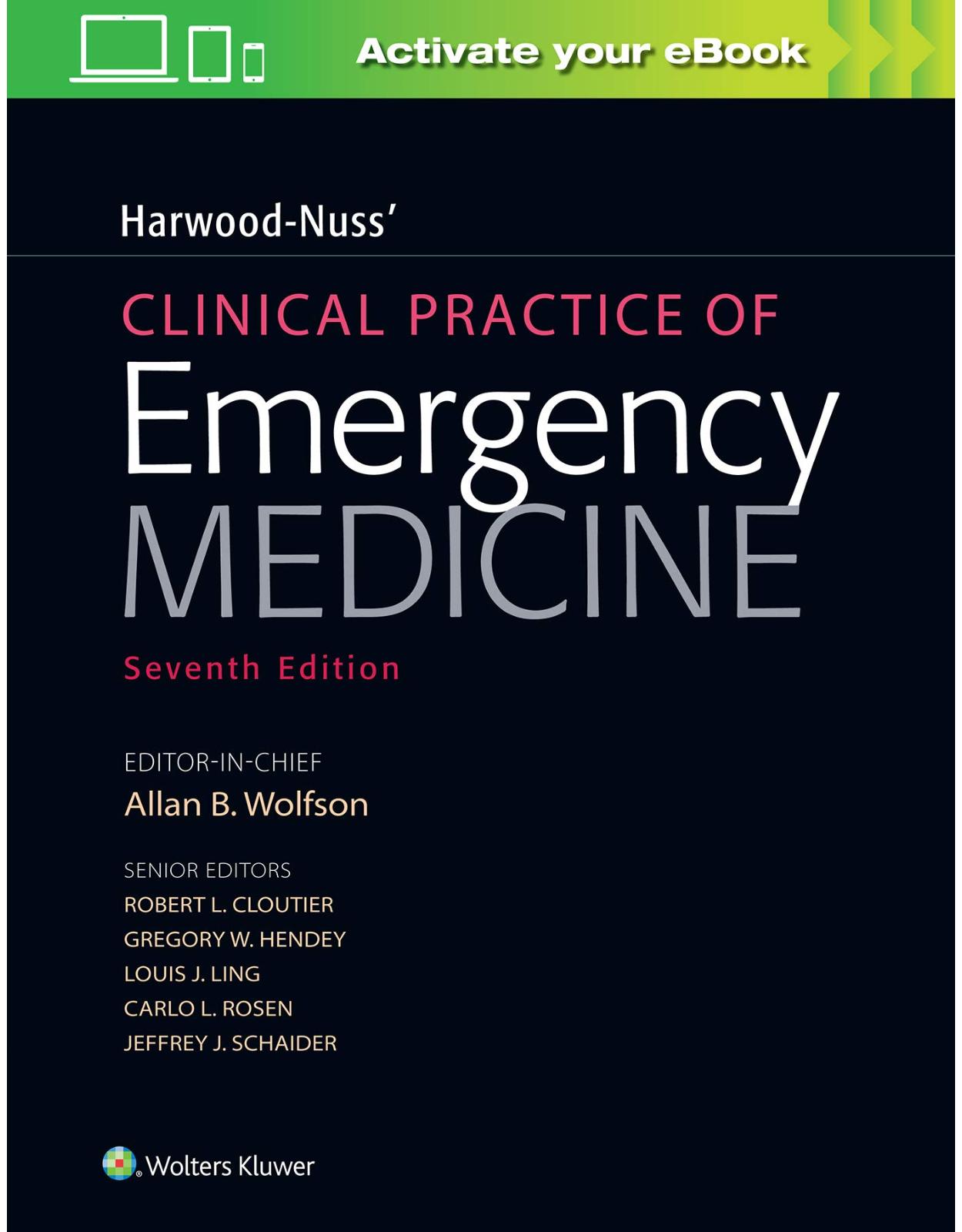
The Washington Manual of Critical Care
Livrare gratis la comenzi peste 500 RON. Pentru celelalte comenzi livrarea este 20 RON.
Disponibilitate: La comanda in aproximativ 4 saptamani
Autor: Marin Kollef
Editura: LWW
Limba: Engleza
Nr. pagini: 912
Coperta: Paperback
Dimensiuni: 127 x 203 mm
An aparitie: 25 sep 2024
Part of the popular Washington Manual® handbook series, The Washington Manual® of Critical Care provides concise, high-yield content that reflects today’s fast-changing advances in the field. Edited by Drs. Marin H. Kollef, Vladimir N. Despotovic, Bryan D. Kraft, Rachel K. McDonald, and Nguyet Nguyen, and written by teams of Washington University residents and faculty, the fourth edition focuses on the essential information you need to know, using a brief, bulleted format, along with numerous figures, tables, algorithms, and images throughout. In one convenient, portable resource, you’ll find complete coverage of bedside diagnosis and management of the most frequently encountered illnesses and problems seen in the ICU—all at your fingertips for quick review and reference.
Table of Contents:
SECTION I Management of Shock
1 Introduction to Shock
2 Hypovolemic Shock
3 Sepsis and Septic Shock
4 Cardiogenic Shock
Etiology
Hemodynamic Profile and Phenotype
Pathophysiology
Clinical Assessment
VITALS AND PHYSICAL EXAM
LABORATORY EVALUATION
12-LEAD ELECTROCARDIOGRAM
IMAGING
POINT-OF-CARE ULTRASOUND
INVASIVE MONITORING
Treatment
TRIAGE AND INITIAL MANAGEMENT
Conclusion
5 Anaphylactic Shock
6 Mechanical Causes of Shock
Pulmonary Embolism
Air Embolism
Fat Embolism
Amniotic Fluid Embolism
7 Emergency Department as the Gateway to the Intensive Care Unit
Mechanically Ventilated Emergency Department Patients
MANAGEMENT OF MECHANICAL VENTILATOR SETTINGS
EMERGENCY DEPARTMENT MANAGEMENT OF SEDATION
Patients With Vasopressor-Dependent Shock
SEPTIC SHOCK
POST-RETURN OF SPONTANEOUS CIRCULATION (ROSC) IN OUT-OF-HOSPITAL CARDIAC ARREST
PERIPHERAL ADMINISTRATION OF VASOPRESSORS
SECTION II Management of Respiratory Disorders
8 An Approach to Respiratory Failure
Hypercapnic Respiratory Failure
Hypoxemic Respiratory Failure
Monitoring Oxygenation and Ventilation
9 Initial Ventilator Setup
10 Upper Airway Obstruction
Infectious Epiglottitis and Laryngitis
Angioedema
Postextubation Stridor
11 The Acute Respiratory Distress Syndrome
12 Acute Severe Asthma
Treatments
STANDARD TREATMENT FOR ALL PATIENTS
CORTICOSTEROIDS
ADDITIONAL THERAPEUTIC CONSIDERATIONS
VENTILATOR STRATEGIES
Intubation Considerations
Other Considerations
EXTRACORPOREAL MEMBRANE OXYGENATION
13 Acute Exacerbations of Chronic Obstructive Pulmonary Disease
Diagnosis
Management
INHALED BRONCHODILATORS
CORTICOSTEROIDS
ANTIMICROBIALS
NONRECOMMENDED THERAPIES
OXYGEN AND NONINVASIVE VENTILATION
INVASIVE MECHANICAL VENTILATION
Management of Acute Exacerbations of Chronic Obstructive Pulmonary Disease After Hospital Discharge
MEDICAL THERAPIES
OXYGEN AND NOCTURNAL NONINVASIVE VENTILATION
PULMONARY REHABILITATION
PALLIATIVE AND END-OF-LIFE CARE
14 Sleep-Disordered Breathing in the Intensive Care Unit
15 Pulmonary Hypertension and Right Ventricular Failure in the Intensive Care Unit
Pathophysiology of Right Ventricle Failure
Causes of Decompensated Right Ventricular Failure
Diagnosis of Decompensated Right Ventricular Failure
CLINICAL PRESENTATION
DIAGNOSTIC TESTING
Treatment of Acute Decompensated Right Ventricle Failure
IDENTIFY AND CORRECT PRECIPITATING FACTORS
CORRECT HYPOXEMIA
REVERSE HYPOTENSION AND RESTORE CIRCULATION
TREAT VOLUME OVERLOAD AND RIGHT VENTRICLE ENCROACHMENT
Mechanical Support
Surgical Interventions
General Measures
16 Pulmonary Embolism
Pathophysiology
Diagnosis
DIAGNOSTIC MODALITIES
STABILITY ASSESSMENT
Prognosis
RISK STRATIFICATION
TRIAGE
Treatment
GENERAL APPROACHES
ANTICOAGULATION
THROMBOLYTIC THERAPY
CATHETER-DIRECTED THERAPY
SURGICAL EMBOLECTOMY
INFERIOR VENA CAVA FILTERS
RISKS OF TREATMENT
17 Pleural Disorders in the Intensive Care Unit
Pleural Effusions
Special Situations
PARAPNEUMONIC EFFUSION
MALIGNANT EFFUSION
HEMOTHORAX
PNEUMOTHORAX
CHEST TUBE SIZE
18 Weaning of Mechanical Ventilation
19 Noninvasive Ventilation
Patient Selection
MODES
SPECIFIC CLINICAL SCENARIOS
Monitoring
Conclusions
SECTION III Cardiac Disorders
20 Acute Myocardial Infarction
ST-Elevation Acute Coronary Syndrome
Non–ST Elevation Acute Coronary Syndrome
Hospital Care of the Patient With Acute Coronary Syndrome
CLASSIFYING MYOCARDIAL INFARCTIONS
Complications After Myocardial Infarction
FAILURE
EMBOLISM AND EFFUSIONS/PERICARDITIS
ARRHYTHMIA
RUPTURE AND REGURGITATION
ANEURYSM
RECURRENT MYOCARDIAL INFARCTION
21 Cardiac Arrhythmias and Conduction Abnormalities
Tachyarrhythmias
SUPRAVENTRICULAR TACHYCARDIAS
VENTRICULAR TACHYCARDIAS
Bradyarrhythmias
Cardiac Arrest
PULSELESS VENTRICULAR TACHYCARDIA AND VENTRICULAR FIBRILLATION
PULSELESS ELECTRICAL ACTIVITY AND ASYSTOLE
22 Aortic Dissection
23 Acute Decompensated Heart Failure
Treatment
GENERAL MEASURES
MANAGEMENT OF CHRONIC HEART FAILURE MEDICATIONS IN ACUTE DECOMPOSED HEART FAILURE
DIURESIS
AFTERLOAD REDUCTION
ARRHYTHMIAS
INOTROPES AND VASOPRESSORS
MECHANICAL SUPPORT
24 Approach to Hypertensive Emergencies
25 Post–Cardiac Arrest Management
SECTION IV Electrolyte Abnormalities
26 Electrolyte Abnormalities
Disorders of Water Balance
HYPONATREMIA
ETIOLOGIES OF SPECIAL IMPORTANCE IN THE CRITICALLY ILL PATIENT
Treatment
Hypernatremia
Etiologies of Special Importance in the Critically Ill Patient
Treatment
Disorders of Volume Balance
Disorders of Potassium Concentration
Hypokalemia
Etiologies of Special Importance in the Critically Ill Patient
Treatment
Hyperkalemia
Etiologies of Special Importance in the Critically Ill Patient
Treatment
Disorders of Calcium Concentration
Hypocalcemia
Etiologies of Special Importance in the Critically Ill Patient
Treatment
Hypercalcemia
Etiologies of Special Importance in the Critically Ill Patient
Treatment
Disorders of Phosphorus Concentration
Hypophosphatemia
Etiologies of Special Importance in the Critically Ill Patient
Treatment
Hyperphosphatemia
Etiologies of Special Importance in the Critically Ill Patient
Treatment
Disorders of Magnesium Concentration
Hypomagnesemia
Etiologies of Special Importance in the Critically Ill Patient
Treatment
Hypermagnesemia
SECTION V Acid-Base Disorders
27 Metabolic Acid-Base Disorders
Metabolic Acidosis
Anion Gap Acidosis
Nonanion Gap Acidosis
Renal Tubular Acidosis
Treatment
Metabolic Alkalosis
Common Causes of Metabolic Alkalosis
Treatment
Mixed Acid-Base Disorders
28 Respiratory Acid-Base Disorders
SECTION VI Endocrine Disorders
29 Thyroid Disorders
Hyperthyroidism
TREATMENT
Hypothyroidism
TREATMENT
30 Adrenal Insufficiency in Critical Illness
31 Diabetic Ketoacidosis and Hyperosmolar Hyperglycemic State
Diabetic Ketoacidosis
Hyperosmolar Hyperglycemic State
Cerebral Edema
32 Glucose Control in the Intensive Care Unit
Trials
Management
SECTION VII Oncologic Emergencies
33 Oncologic Emergencies
Malignant Spinal Cord Compression
Superior Vena Cava Syndrome
Hyperleukocytosis and Leukostasis
Tumor Lysis Syndrome
Cytokine Release Syndrome and Immune Effector Cell–Associated Neurotoxicity Syndrome
SECTION VIII Temperature Alterations
34 Temperature Alterations
Temperature Regulation
Fever and Hyperthermia
TREATMENT
Hypothermia
TREATMENT
Induced Hypothermia as Therapy
35 High-Altitude Illness
Acute Mountain Sickness/High-Altitude Cerebral Edema
High-Altitude Pulmonary Edema
Prevention
SECTION IX Toxicology
36 Toxicology
Key Steps in the Management of the Poisoned Patient
Initial Evaluation
Diagnostic Strategies
IMPORTANT PRINCIPLES
TOXIDROMES
INGESTION HISTORY
OPTIMAL USE OF LABORATORY TESTS
EVALUATION OF LABORATORY ABNORMALITIES
Treatment Strategies
ANTIDOTES
GASTRIC DECONTAMINATION
ENHANCING DRUG ELIMINATION
APPROACH TO POISONING ASSOCIATED ORGAN FAILURE IN THE INTENSIVE CARE UNIT
Management of Common Intoxications: Common Medications
ACETAMINOPHEN
SALICYLATES
BETA-BLOCKERS AND CALCIUM CHANNEL BLOCKERS
DIGOXIN AND CARDIAC GLYCOSIDES
NEUROLEPTIC MALIGNANT SYNDROME
SEROTONIN SYNDROME
TRICYCLIC ANTIDEPRESSANTS
Drugs of Abuse
ALCOHOLS
OPIOIDS
COCAINE AND AMPHETAMINE-RELATED TOXINS
SYNTHETIC CANNABINOIDS
Environmental Exposures
CARBON MONOXIDE
SNAKE ENVENOMATION
SECTION X Infectious Diseases
37 Central Nervous System Infections
Community-Acquired Central Nervous System Infections: Approach to the Patient With Suspected Meningitis or Encephalitis
Nosocomial Central Nervous System Infections
38 Community-Acquired Pneumonia
39 Nosocomial Pneumonia
40 Cellulitis/Fasciitis/Myositis
Cellulitis
Necrotizing Fasciitis
Myositis/Pyomyositis/Gas Gangrene
Ecthyma Gangrenosum
Diagnosis and Treatment of Necrotizing Infections
41 Bacteremia and Catheter-Related Bloodstream Infections
Bacteremia
Central Line–Associated Bloodstream Infections
42 Invasive Fungal Infection
Yeast
CANDIDA SPP.
Cryptococcus SPP.
Dimorphic Fungi
HISTOPLASMA
BLASTOMYCES SPP.
Coccidioides Spp.
PENICILLIUM
Monomorphic Molds
PNEUMONIA
RHINOSINUSITIS
CUTANEOUS LESIONS
43 Infections in the Immunocompromised Host
Immune System Function and Dysfunction
Neutropenia
Solid-Organ Transplantation
Hematopoietic Stem Cell Transplantation
Human Immunodeficiency Virus
Asplenia
Biologic Agents
44 Infection Prevention in the Intensive Care Unit
General Measures
Catheter-Associated Urinary Tract Infection
Ventilator-Associated Pneumonia
Central Line–Associated Bloodstream Infection
Emerging Infectious Diseases
Quality Improvement
45 Clostridioides difficile and Other Infectious Causes of Diarrhea
Clostridioides difficile Infection
ASSESSMENT
DIAGNOSIS
TREATMENT
RECURRENCE
INFECTION PREVENTION AND CONTROL
Non–Clostridioides difficile Infectious Diarrhea
46 COVID-19 and Other Viral Pneumonias
Preventive and Supportive Measures
Management of Influenza Viruses
Management of Severe Acute Respiratory Syndrome Coronavirus 2
SECTION XI Renal Disorders
47 Acute Kidney Injury
Definition
Diagnostic Approach to the Patient With Acute Kidney Injury
Urine Chemistries
URINE SODIUM
URINALYSIS AND URINE MICROSCOPY
URINE BIOMARKERS
Etiology of Acute Kidney Injury
PRERENAL ACUTE KIDNEY INJURY
Postrenal Acute Kidney Injury
Intrinsic Acute Kidney Injury
ACUTE TUBULAR NECROSIS
GLOMERULAR AND MICROVASCULAR PROCESSES
INTERSTITIAL PROCESSES
Summary
48 Renal Replacement Therapy
Indications
ACIDOSIS
HYPERKALEMIA
VOLUME OVERLOAD
UREMIA
Timing of Initiation of Renal Replacement Therapy
Modalities
Dialysis Dose
Drug Dosing During Continuous Renal Replacement Therapy
Drug Dosing During Prolonged Intermittent Renal Replacement Therapy
Complications of Renal Replacement Therapy
HYPOTENSION
ARRHYTHMIAS
DIALYZER REACTIONS
DIALYSIS CATHETER-RELATED PROBLEMS
PROBLEMS ASSOCIATED WITH CONTINUOUS RENAL REPLACEMENT THERAPY
Discontinuation of Renal Replacement Therapy
Summary
SECTION XII Hepatic Diseases
49 Acute Liver Failure
Causes and Diagnosis
Etiology-Specific Management of Acute Liver Failure
ACETAMINOPHEN TOXICITY
NONACETAMINOPHEN ETIOLOGIES
Management of Systemic Complications
CENTRAL NERVOUS SYSTEM
COAGULOPATHY
HYPOTENSION
INFECTION
RENAL FAILURE
METABOLIC COMPLICATIONS
Prognostic Indicators
Liver Transplantation
50 Hyperbilirubinemia
Physiology
INDIRECT HYPERBILIRUBINEMIA
DIRECT HYPERBILIRUBINEMIA
DIAGNOSIS AND THERAPY
51 End-Stage Liver Disease
Ascites
Spontaneous Bacterial Peritonitis
Acute Kidney Injury
Hepatic Encephalopathy
Variceal Hemorrhage
Transjugular Intrahepatic Portosystemic Shunt
Acute-on-Chronic Liver Failure
Malnutrition
SECTION XIII Gastrointestinal Disorders
52 Gastrointestinal Bleeding
Resuscitation and Early Management
Upper Gastrointestinal Bleeding
Lower Gastrointestinal Bleeding
Small Bowel Bleeding
53 Acute Pancreatitis
Evaluation
Prediction of Severity
Management
Summary
SECTION XIV Neurologic Disorders
54 Status Epilepticus
Definition of Status Epilepticus
Initial Management of Status Epilepticus
Refractory Status Epilepticus
Super-Refractory Status Epilepticus
Therapy De-Escalation
Prognosis
55 Acute Ischemic Stroke
Presentation
Management
INTRAVENOUS THROMBOLYSIS AND MECHANICAL THROMBECTOMY
POSTSTROKE MANAGEMENT
Cerebral Edema
SEIZURES
56 Aneurysmal Subarachnoid Hemorrhage
Diagnosis and Initial Management
Complications of Subarachnoid Hemorrhage
Cerebral Vasospasm and Delayed Cerebral Ischemia
57 Intracerebral Hemorrhage
Clinical Presentation
Diagnosis
Management
AIRWAY
BLOOD PRESSURE MANAGEMENT
COAGULOPATHY
VENTRICULOSTOMY AND INTRACRANIAL PRESSURE MANAGEMENT
SEIZURES
NEUROSURGICAL INTERVENTION
FEVER
GENERAL CARE
Prognosis
58 Coma
Localization of Coma
APPROACH TO COMA
DIAGNOSTIC STUDIES IN COMA
STABILIZATION OF THE PATIENT IN COMA
Prognosis
59 Declaration of Brain Death
History
Definition
Prerequisites
Physical Examination
Apnea Test
Ancillary Tests
Special Situations
EXTRACORPOREAL MEMBRANE OXYGENATION
HYPOTHERMIA IN CARDIAC ARREST PATIENTS
Communication With Family
Summary
60 Sedation and Delirium in the Intensive Care Unit
Sedation
Delirium
PREVENTION OF DELIRIUM
TREATMENT OF DELIRIUM
Conclusion
61 Acute Spinal Cord Disorders
Traumatic Spinal Cord Injury
NEUROPROTECTION
CARDIOVASCULAR MANAGEMENT
AIRWAY AND BREATHING
THROMBOEMBOLISM PREVENTION
GASTROINTESTINAL MANAGEMENT
SKIN
OTHER ISSUES
Nontraumatic Myelopathy
62 Neuromuscular Disorders in the Critically Ill
Neuromuscular Respiratory Failure
Motor Neuron Diseases
Guillain-Barré Syndrome
Myasthenia Gravis
Rhabdomyolysis, Malignant Hyperthermia, and Critical Illness Myopathy
63 Traumatic Brain Injury and Elevated Intracranial Pressure
Initial Stabilization and Management
Intensive Care Unit Management of Patients With Severe Traumatic Brain Injury
Intracranial Pressure Control
Cerebral Perfusion Pressure Threshold
Seizure Prophylaxis
Venous Thromboembolism Prevention
Nutritional Support
64 Neurologic Approach to Central Nervous System Infections
General Measures
Meningitis
BACTERIAL MENINGITIS
ASEPTIC MENINGITIS
Encephalitis
HERPES SIMPLEX VIRUS ENCEPHALITIS
VARICELLA-ZOSTER VIRUS ENCEPHALITIS
ARTHROPOD-BORNE ENCEPHALITIS
Brain Abscess
Infections Related to Neurosurgery
Tropical Central Nervous System Infections
Immunocompromised Patients
SECTION XV Hematopoietic Disorders
65 Thrombocytopenia in the Intensive Care Unit
Immune Thrombocytopenic Purpura
Heparin-Induced Thrombocytopenia
Sepsis-Induced Thrombocytopenia
Thrombotic Thrombocytopenic Purpura
Vaccine-Induced Immune Thrombotic Thrombocytopenia
Platelet Transfusions
66 Acute Management of the Bleeding Patient/Coagulopathy
Coagulation
SCREENING TESTS FOR COAGULATION
FURTHER TESTS TO ASSESS ACUTE BLEEDING
Common Acquired Disorders of Coagulation in the Critical Care Setting
LIVER DISEASE
DISSEMINATED INTRAVASCULAR COAGULATION
UREMIC BLEEDING
VITAMIN K DEFICIENCY AND WARFARIN THERAPY
BLEEDING DUE TO DIRECT ORAL ANTICOAGULANTS
Common Congenital Disorders of Coagulation
HEMOPHILIA A AND B
von WILLEBRAND DISEASE
67 Transfusion Practices
Dosing and Administration
Types of Red Blood Cell Products
WHOLE BLOOD
PACKED RED BLOOD CELLS
LEUKOREDUCED RED BLOOD CELLS
GAMMA-IRRADIATED RED BLOOD CELLS
SALINE-WASHED RED BLOOD CELLS
Risk of Transfusions
ACUTE TRANSFUSION RISKS
LONG-TERM TRANSFUSION RISKS
68 Hypercoagulable States
Deep Venous Thrombosis and Pulmonary Embolism
Arterial Thromboembolism
Hypercoagulability Evaluation
Conditions Associated With Decreased Platelets and Hypercoagulability
69 Critical Care Rheumatology
General Rules
Pulmonary Renal Syndrome and Diffuse Alveolar Hemorrhage
Critical Complications of Autoimmune Diseases
SYSTEMIC LUPUS ERYTHEMATOSUS
Vasculitis
LARGE-VESSEL VASCULITIS
SMALL-VESSEL VASCULITIS
Catastrophic Antiphospholipid Syndrome
Guidance to Laboratory Test Interpretation and Key-Associated Facts
70 Management of the Solid Organ Transplant Recipients in the Intensive Care Unit
Infectious Complications
Complications of Immunosuppressive Therapy
Anatomic or Surgical Concerns
FINAL CONSIDERATIONS
SECTION XVI Pregnancy
71 Maternal-Fetal Critical Care
Respiratory Changes of Pregnancy
Cardiovascular Changes in Pregnancy
Hemodynamics of Delivery
Importance of Gestational Age
Pregnancy-Specific Disorders
INTRODUCTION
Amniotic Fluid Embolism
Acute Fatty Liver
Obstetric Hemorrhage
Peripartum Cardiomyopathy
Hypercoagulability/Thromboembolism
Extracorporeal Membrane Oxygenation in Pregnancy
Cardiopulmonary Resuscitation/Resuscitative Hysterotomy
Medication Safety in Pregnancy
Imaging
Blood Transfusion in Patients of Childbearing Potential
Practical Considerations for the Pregnant Patient
72 Preeclampsia and Eclampsia
Diagnosis
Pathophysiology by Organ System
VASCULAR
HEMATOLOGIC
HEPATIC
CENTRAL NERVOUS SYSTEM
RENAL
FETAL
Treatment
SECTION XVII Surgical Problems
73 Trauma Care for the Intensive Care Unit
Trauma Evaluation
PRIMARY SURVEY
MAJOR IMMEDIATE LIFE-THREATENING CONDITIONS
Other Injuries Requiring Intensive Care Unit Care
HEMORRHAGIC SHOCK
DISTRIBUTIVE (SPINAL) SHOCK
FLAIL CHEST
PULMONARY CONTUSION
SPLEEN AND LIVER INJURIES, PELVIC HEMATOMAS
HEAD INJURY
CERVICAL SPINE INJURY
Later Complications
Conclusion
74 The Acute Abdomen
Patient History
Laboratory History
Physical Examination
Radiographic Examination
75 Management of the Organ Donor
Organ Donation
Donor Management Protocols
NORMALIZE HEMODYNAMICS
OPTIMIZE PULMONARY FUNCTION
CORRECT ACID-BASE AND ELECTROLYTE DISTURBANCES
MAINTAIN NORMOTHERMIA
Specialized Donor Care Facilities
Summary
SECTION XVIII Nutrition in the ICU
76 Nutrition in the Intensive Care Unit
Nutrition Assessment and Risk Determination
Nutrition Monitoring
Nutrition Prescription and Initiation
SECTION XIX Procedures
77 Arterial Catheterization
Steps for Radial Artery Cannulation
Tips
78 Central Venous Catheterization
Internal Jugular Central Venous Catheter Placement
Femoral Central Venous Catheter Placement
Subclavian Central Venous Catheter Placement
79 Endotracheal Intubation
Required Preparations
How to Intubate
Additional Techniques
Confirmation
80 Percutaneous Tracheostomy
Indications
Contraindications
Timing of Tracheostomy Procedure in Patients Who Are Critically Ill
Considerations in Patients Tested Positive for COVID-19
Procedure for Percutaneous Tracheostomy
Complications
81 Chest Tube Insertion
Definition
Indications
Contraindications
Imaging
Site Selection
Choosing the Optimal Tube Size and Approach
PROCEDURE STEPS
Drainage Systems
Guidelines for Chest Tube Removal
REMOVAL STEPS
Complications
82 Paracentesis
Performance of Paracentesis
Diagnostic Considerations
83 Lumbar Puncture
Indications and Contraindications
Technique
COLLECT THE SUPPLIES
POSITION THE PATIENT
FIND THE L4-5 SPACE
SCRUB AND ANESTHETIZE THE SPACE
INSERT THE SPINAL NEEDLE
ADVANCE THE SPINAL NEEDLE
MEASURE CEREBROSPINAL FLUID PRESSURE AND COLLECT FLUID
Complications
84 Thoracentesis
Definition
Indications
Relative Contraindications
History
Site Selection
Procedure
Complications
85 Pulmonary Artery Catheterization
Procedure Technique
Cardiac Output Determination
86 Alternative Hemodynamic Monitoring
Aortic Doppler
Transpulmonary Thermodilution
Pulse Contour Analysis
Partial Carbon Dioxide Rebreathing
Thoracic Bioimpedance
Thoracic Bioreactance
Conclusion
87 Functional Hemodynamic Monitoring
Hemodynamic Assessment and Monitoring
Noninvasive Hemodynamic Tools and Methods
PHYSICAL EXAMINATION
NONINVASIVE BLOOD PRESSURE CUFF
PULSE PRESSURE AND STROKE VOLUME VARIATION ANALYSIS
POINT-OF-CARE ULTRASOUND
Invasive Hemodynamic Tools and Methods
ARTERIAL LINES
CENTRAL VENOUS CATHETERS
SWAN-GANZ CATHETERS
The Frank-Starling Mechanism
Hemodynamic Profiles of Shock
HEMORRHAGIC OR HYPOVOLEMIC SHOCK
CARDIOGENIC SHOCK
SEPTIC SHOCK
MIXED SHOCK
COEXISTING ENDOGENOUS AND EXOGENOUS FORCES
Hemodynamics in the Treatment of Shock
HEMORRHAGIC OR HYPOVOLEMIC SHOCK
CARDIOGENIC SHOCK
SEPTIC SHOCK
88 Pericardiocentesis
Steps for Bedside Pericardiocentesis
89 Extracorporeal Life Support
Extracorporeal Life Support Function
Cannulation
Extracorporeal Life Support Modes
Venovenous Extracorporeal Membrane Oxygenation
Venoarterial Extracorporeal Membrane Oxygenation
Extracorporeal CO2 Removal
Patient Selection and Complications
Management of Patients on Extracorporeal Life Support
Separating From Extracorporeal Life Support
90 Basic Critical Care Ultrasound
Introduction
Basic Ultrasound Physics
Ultrasound Machine
Lung Ultrasound and the Evaluation of Acute Respiratory Failure
Key Points
Performing the Examination
The Five Lung Signatures
Approach to Acute Respiratory Failure
Focused Echocardiography
Key Points
Limitations
Image Acquisition and Interpretation
Measuring Stroke Volume by Bedside Echocardiography
Shock
Pneumothorax
Tamponade
Acute Left Ventricle Failure
Hypovolemic/Septic Shock
Right Ventricular Pressure/Volume Overload
Deep Vein Thrombosis
Basic Abdomen
Key Points
Free Peritoneal Fluid
Renal Ultrasound
Bladder Ultrasound
Critical Care Ultrasound
Physics
Pulmonary/Respiratory Failure
Focused Echocardiography
DVT
Volume Responsiveness/Advanced Echocardiography
Abdominal
SECTION XX End-of-Life Issues and Informatics
91 Patient and Family Engagement, Goals of Care Communication, and End-of-Life Care in the Intensive Care Unit
Core Ethical Principles
Establishing Goals of Care
Shared Decision-Making
Surrogate Decision-Making
Communication Strategies
Surgical and Procedural Considerations
Withdrawing and Withholding Life-Sustaining Treatments
Futility
Death by Whole Brain Criteria
Conclusion
92 Informatics in the Intensive Care Unit
Clinical Informatics
The Rise of Health Information Technology
Building an Integrated Intensive Care Unit
Factors Affecting Health Information Technology Adoption
Toward a Smart Intensive Care Unit
SECTION XXI Appendices
93 Common Equations and Rules of Thumb in the Intensive Care Unit
Pulmonary Equations
ALVEOLAR GAS EQUATION
ALVEOLAR-ARTERIAL OXYGEN GRADIENT
PARTIAL PRESSURE OF ARTERIAL CARBON DIOXIDE
LUNG COMPLIANCE
AIRWAY RESISTANCE
DRIVING PRESSURE (DP)
TRANSPULMONARY PRESSURE (PTP)
Acid-Base Equations
ACUTE RESPIRATORY ACIDOSIS OR RESPIRATORY ALKALOSIS
CHRONIC RESPIRATORY ACIDOSIS OR RESPIRATORY ALKALOSIS
METABOLIC ACIDOSIS
METABOLIC ALKALOSIS
Validity of the Data, Henderson’s Equation for Concentration of H+
ANION GAP
DELTA GAP
Renal Equations
CALCULATED OSMOLARITY
OSMOLAR GAP
ESTIMATED CREATININE CLEARANCE
CREATININE CLEARANCE
Fractional Excretion of Sodium (FENa+)
FRACTIONAL EXCRETION OF UREA (FE UREA)
CORRECTING SODIUM FOR HYPERGLYCEMIA
FREE WATER DEFICIT
USEFUL FORMULA FOR SLOWLY CORRECTING HYPONATREMIA
Hemodynamic Equations
Mean Arterial Pressure (MAP) (70-100 MM HG)
Arterial Oxygen Content (CaO2) (18-21 ML O2/DL)
Mixed Venous Oxygen Content (CvO2) (14.5-15.5 ML O2/DL)
Arterial-Mixed Venous Oxygen Content Difference (3.5-5.5 ML O2/DL)
Oxygen Delivery (mL/min) (1,000 ML/MIN)
Oxygen Uptake (mL/min) (1,000 ML/MIN)
OXYGEN EXTRACTION RATIO (O2ER)
Cardiac Output (CO) (4-7 L/MIN)
Cardiac Index (CI) (2.5-4 L/MIN/M2)
Systemic Vascular Resistance (SVR) (800-1,200 DYNE∙S∙CM-5)
Pulmonary Vascular Resistance (PVR) (120-220 DYNE∙S∙CM–5)
Point-of-Care Ultrasound Equations
Left Ventricle Stroke Volume (LV SV) (50-120 ML per contraction)
Stroke Volume Index (SVI) (35-50 ML/M2)
CARDIAC OUTPUT (CO)
LEFT VENTRICLE FRACTIONAL SHORTENING (LV FS%)
RESPIRATORY VARIATION OF INFERIOR VENA CAVA (IVC% COLLAPSIBILITY)
RIGHT VENTRICULAR SYSTOLIC PRESSURE (RVSP)
94 Drug-Drug Interactions
95 Common Drug Dosages and Side Effects
Index
| An aparitie | 25 sep 2024 |
| Autor | Marin Kollef |
| Dimensiuni | 127 x 203 mm |
| Editura | LWW |
| Format | Paperback |
| ISBN | 9781975215453 |
| Limba | Engleza |
| Nr pag | 912 |
| Versiune digitala | DA |


















Clientii ebookshop.ro nu au adaugat inca opinii pentru acest produs. Fii primul care adauga o parere, folosind formularul de mai jos.